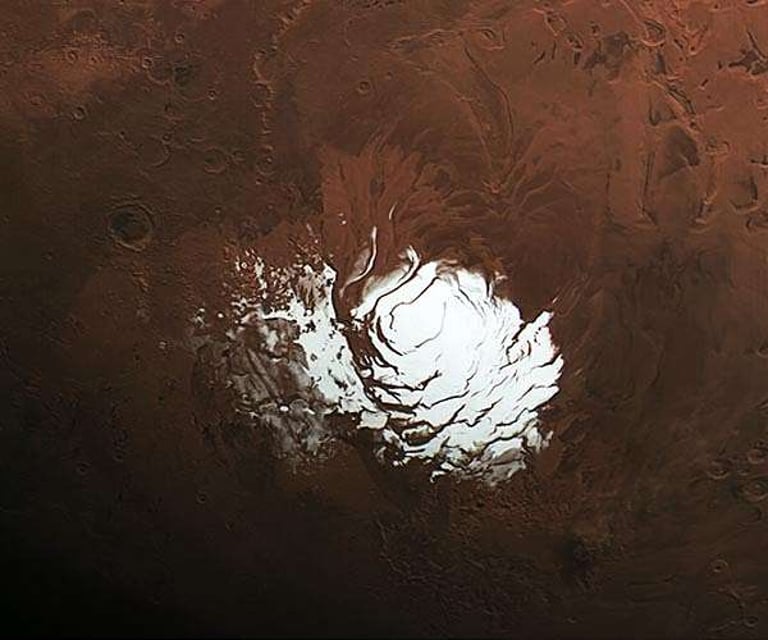Mars' Ancient Rivers: Carbon Dioxide, Not Climate, Melted Polar Ice for Flowing Water
November 4, 2024
A recent study led by Peter Buhler from the Planetary Science Institute reveals that frozen carbon dioxide on Mars insulated heat from the planet's interior, melting significant amounts of water without the need for climatic warming.
Buhler's model explains how the accumulation of carbon dioxide on ice caps led to the formation of subglacial rivers, which in turn created eskers—gravel ridges formed by ancient river systems beneath glaciers.
These eskers have been found near Mars' south pole, corroborating Buhler's model and suggesting a history of subglacial meltwater, challenging previous assumptions that global warming was necessary for liquid water's presence.
This research indicates that a thick layer of carbon dioxide ice, resting on a substantial layer of water ice, acted as an insulator, facilitating the melting of water from the base of the ice cap.
As meltwater flowed from beneath the ice sheets, it formed slow-moving streams that eventually created large lakes, such as the Argyre Basin, indicating a sustained hydrologic cycle on ancient Mars.
This research provides a new explanation for the formation of ancient river valleys on Mars, potentially reshaping our understanding of the planet's hydrology without invoking unexplained climatic warming events.
The study also suggests that 3.6 billion years ago, Mars had flowing rivers and a lake comparable in size to the Mediterranean Sea, all under thick ice ceilings.
Buhler plans to conduct further tests on this model to confirm its predictions regarding Mars' water cycle and its historical climate.
The model simulates the carbon dioxide cycle, highlighting minimal atmospheric influence on water flow compared to the interactions between Martian regolith and the southern polar ice cap.
Buhler posits that this carbon dioxide cycle could have persisted for millions of years, demonstrating a polar-to-equator water cycle without requiring a warmer climate.
Additionally, the model emphasizes how Mars' rotational tilt affects the carbon dioxide cycle, influencing how carbon dioxide escapes from regolith and deposits at the poles.
Overall, Buhler's findings may lead to a significant reevaluation of Mars' ancient hydrology and its climatic history.
Summary based on 2 sources

